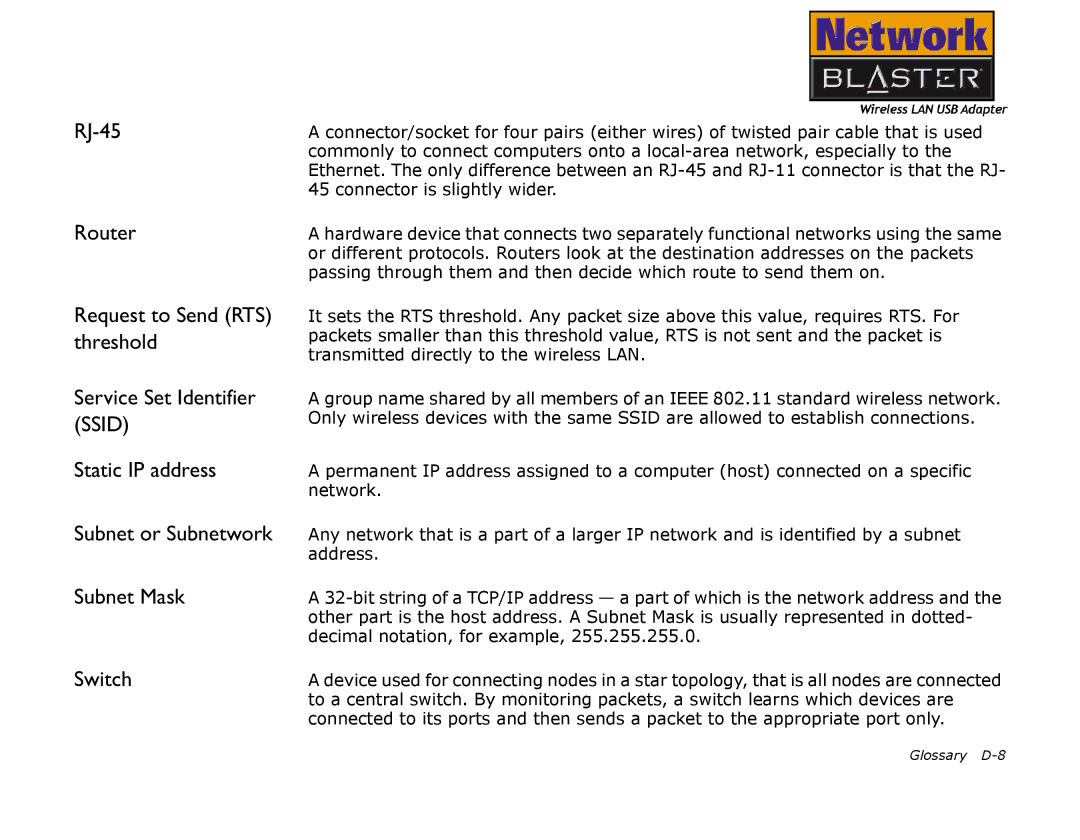
Router
Request to Send (RTS) threshold
Service Set Identifier (SSID)
Static IP address
Subnet or Subnetwork
Subnet Mask
Switch
A connector/socket for four pairs (either wires) of twisted pair cable that is used commonly to connect computers onto a
A hardware device that connects two separately functional networks using the same or different protocols. Routers look at the destination addresses on the packets passing through them and then decide which route to send them on.
It sets the RTS threshold. Any packet size above this value, requires RTS. For packets smaller than this threshold value, RTS is not sent and the packet is transmitted directly to the wireless LAN.
A group name shared by all members of an IEEE 802.11 standard wireless network. Only wireless devices with the same SSID are allowed to establish connections.
A permanent IP address assigned to a computer (host) connected on a specific network.
Any network that is a part of a larger IP network and is identified by a subnet address.
A
A device used for connecting nodes in a star topology, that is all nodes are connected to a central switch. By monitoring packets, a switch learns which devices are connected to its ports and then sends a packet to the appropriate port only.
